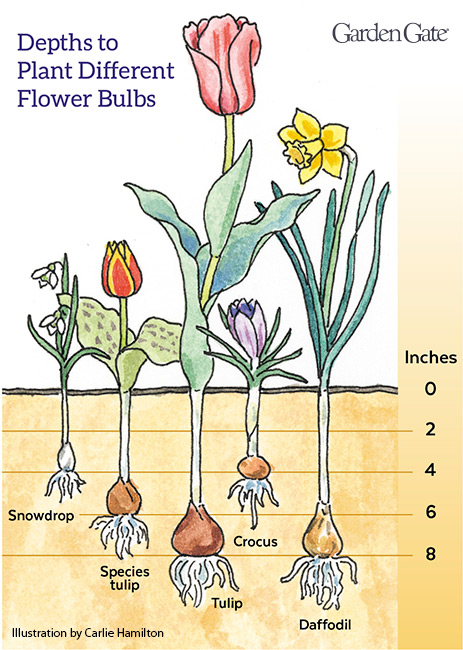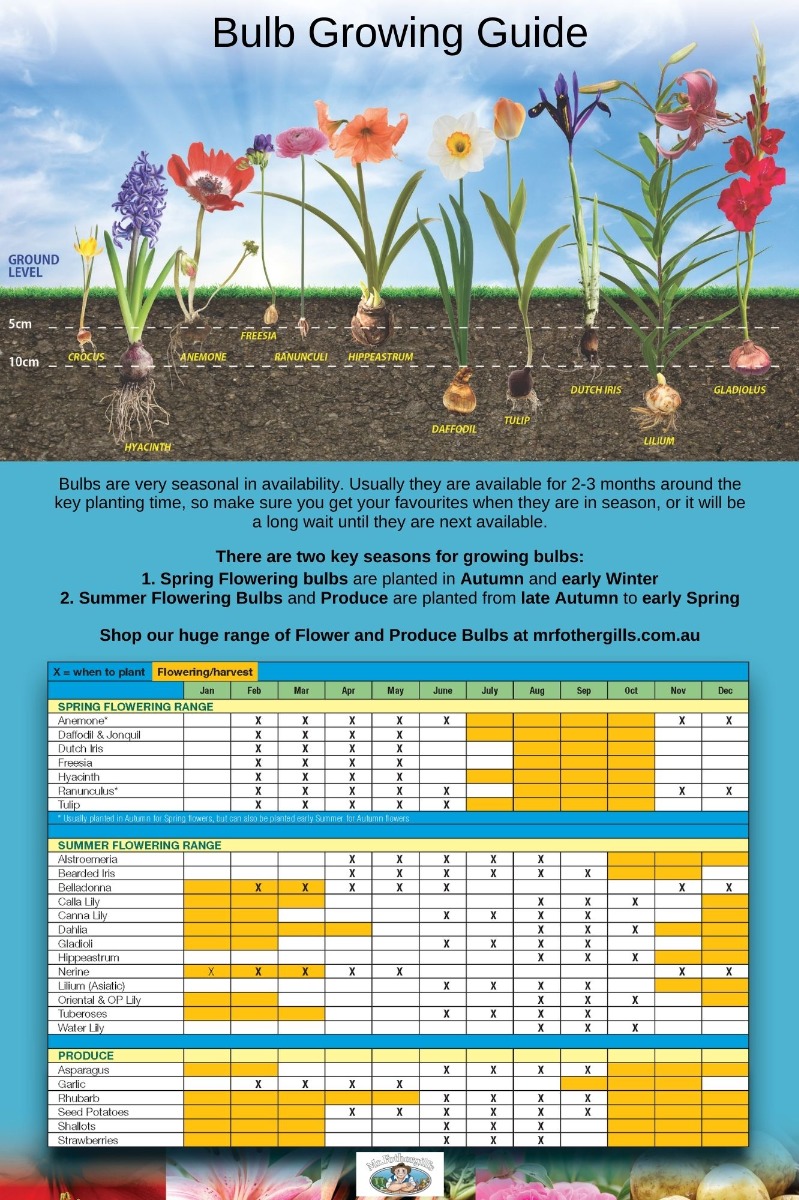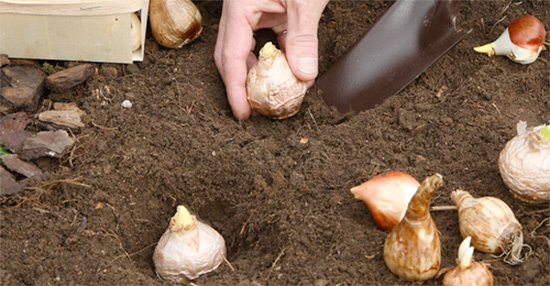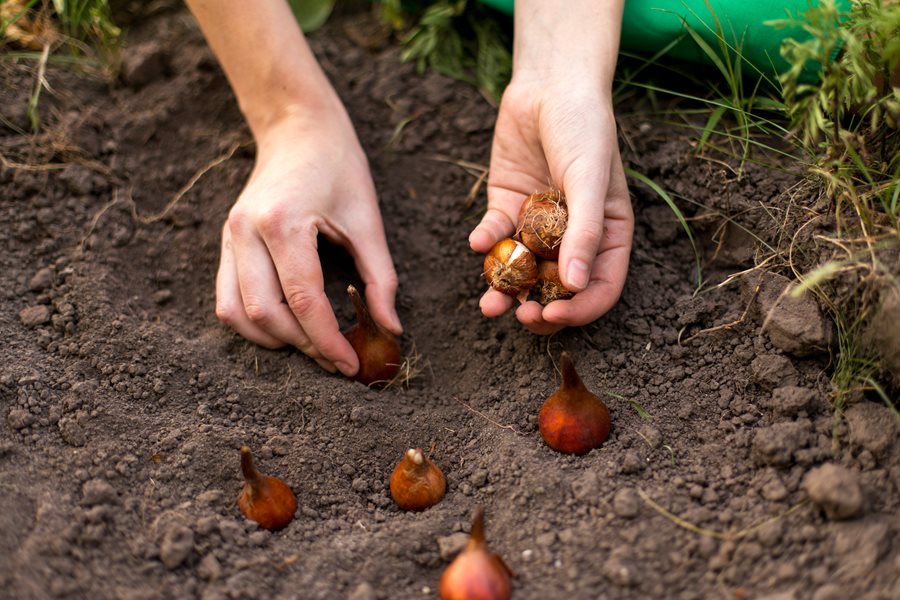Why Planting at the Right Time Matters
Planting bulbs at the right time is crucial for their growth, blooming, and overall health. When you plant bulbs at the wrong time, they may not receive the necessary cold treatment, resulting in weak or non-existent blooms. On the other hand, planting bulbs at the right time helps to prevent pests and diseases from taking hold. For instance, planting bulbs in the fall allows them to establish themselves in the soil before the winter weather sets in, reducing the risk of rot and other diseases.
So, when should you plant bulbs? The answer depends on your location and the type of bulbs you are planting. In general, spring-blooming bulbs, such as tulips and daffodils, should be planted in the fall, about 6-8 weeks before the first frost. Summer-blooming bulbs, such as lilies and gladiolus, should be planted in the spring, after the last frost. Fall-blooming bulbs, such as colchicums and autumn crocus, should be planted in the late summer to early fall. By planting bulbs at the right time, you can ensure they receive the necessary conditions to thrive.
Understanding Your Climate: A Key to Successful Bulb Planting
Determining your climate zone is crucial to successful bulb planting. Climate zones are classified based on the average annual extreme minimum temperature, which affects the growth and blooming of bulbs. In the United States, for example, the USDA Plant Hardiness Zone Map divides the country into 11 zones, with Zone 1 being the coldest and Zone 11 being the warmest.
To determine your climate zone, you can check the USDA Plant Hardiness Zone Map or consult with a local nursery or gardening expert. Knowing your climate zone will help you choose the right bulbs for your region and plant them at the best time. For instance, if you live in a cold climate (Zones 3-5), you should plant spring-blooming bulbs in the fall, about 6-8 weeks before the first frost. In warmer climates (Zones 8-10), you can plant bulbs in the late winter to early spring.
When should you plant bulbs? The answer depends on your climate zone and the type of bulbs you are planting. By understanding your climate zone, you can ensure that your bulbs receive the necessary conditions to thrive. Whether you’re a seasoned gardener or a beginner, knowing your climate zone is essential to successful bulb planting.
How to Choose the Right Bulbs for Your Region
Selecting the right bulbs for your region is crucial to their success. Different bulbs thrive in different climate zones, and choosing the wrong bulbs can lead to disappointing results. When selecting bulbs, consider the specific needs of each variety, including temperature, moisture, and sunlight requirements.
Popular spring-blooming bulbs, such as tulips, daffodils, and hyacinths, thrive in cooler climates (Zones 3-5) and should be planted in the fall. Summer-blooming bulbs, like lilies and gladiolus, prefer warmer temperatures (Zones 6-8) and should be planted in the spring. Fall-blooming bulbs, such as colchicums and autumn crocus, do well in a variety of climates (Zones 4-8) and should be planted in the late summer to early fall.
When should you plant bulbs? The answer depends on the type of bulbs you are planting and your climate zone. By choosing the right bulbs for your region, you can ensure they receive the necessary conditions to thrive. Some popular varieties for different regions include:
– For cold climates (Zones 3-5): tulips, daffodils, and hyacinths
– For warm climates (Zones 6-8): lilies, gladiolus, and cannas
– For temperate climates (Zones 4-7): crocuses, grape hyacinths, and scillas
By considering the specific needs of each bulb variety and choosing the right bulbs for your region, you can enjoy a vibrant and thriving bulb garden.
The Best Time to Plant Bulbs in Different Regions
When it comes to planting bulbs, timing is everything. The best time to plant bulbs varies depending on the region, climate, and type of bulb. Here’s a region-by-region guide to help you determine when to plant bulbs in your area:
Northern States (Zones 3-5): Plant spring-blooming bulbs, such as tulips and daffodils, in the fall, about 6-8 weeks before the first frost. Plant summer-blooming bulbs, like lilies and gladiolus, in the spring, after the last frost.
Southern States (Zones 6-8): Plant spring-blooming bulbs in the late winter to early spring, when the soil can be worked. Plant summer-blooming bulbs in the spring, after the last frost.
Western States (Zones 8-10): Plant spring-blooming bulbs in the late winter to early spring, when the soil can be worked. Plant summer-blooming bulbs in the spring, after the last frost.
Coastal Regions (Zones 9-11): Plant spring-blooming bulbs in the late winter to early spring, when the soil can be worked. Plant summer-blooming bulbs in the spring, after the last frost.
When should you plant bulbs? The answer depends on your region and the type of bulbs you are planting. By planting bulbs at the right time, you can ensure they receive the necessary conditions to thrive. Remember to check the specific planting instructions for each variety of bulb to ensure optimal results.
Preparing Your Soil for Bulb Planting
Before planting bulbs, it’s essential to prepare the soil to ensure optimal growth and blooming. Bulbs need well-draining soil that is rich in nutrients to thrive. Here are some tips to help you prepare your soil for bulb planting:
Test Your Soil: Start by testing your soil to determine its pH level and nutrient content. You can purchase a soil testing kit or send a sample to a lab for analysis. Based on the results, you can adjust the pH level and add necessary nutrients.
Remove Debris and Weeds: Clear the area of any debris, weeds, and rocks. This will give the bulbs a clean start and prevent competition for water and nutrients.
Add Organic Matter: Mix in 2-4 inches of organic matter, such as compost or well-rotted manure, into the top 6-8 inches of soil. This will improve drainage, increase the soil’s water-holding capacity, and provide nutrients.
Adjust pH Level: If your soil test reveals an imbalanced pH level, adjust it accordingly. Most bulbs prefer a slightly acidic to neutral soil pH, ranging from 6.0 to 7.0.
Check Soil Structure: Bulbs need well-draining soil to prevent waterlogged soil conditions. If your soil is heavy clay or sandy, mix in organic matter or perlite to improve drainage.
By preparing your soil before planting bulbs, you can ensure they receive the necessary conditions to thrive. Remember, when should you plant bulbs? The answer depends on your region and the type of bulbs you are planting. By planting bulbs at the right time and in well-prepared soil, you can enjoy a vibrant and thriving bulb garden.
Planting Bulbs Like a Pro: Tips and Tricks
Planting bulbs can be a daunting task, especially for beginners. However, with the right techniques and knowledge, you can ensure your bulbs thrive and provide a beautiful display of colors. Here are some expert tips and tricks to help you plant bulbs like a pro:
Depth Matters: Plant bulbs at the correct depth to ensure they receive the necessary light and water. As a general rule, plant bulbs 2-3 times deeper than their height. For example, if the bulb is 2 inches tall, plant it 4-6 inches deep.
Spacing is Key: Plant bulbs at the correct spacing to prevent overcrowding and ensure good air circulation. The general rule of thumb is to plant bulbs 3-6 inches apart, depending on the variety.
Orient Bulbs Correctly: Plant bulbs with the pointed end facing upwards and the flat base facing downwards. This ensures the bulb grows in the correct direction and receives the necessary light.
Plant in Clusters: Planting bulbs in clusters creates a more dramatic display of colors and can help to naturalize the bulbs over time. Plant 3-5 bulbs together, depending on the variety and spacing requirements.
Label and Record: Label each bulb variety and record the planting date, depth, and spacing. This helps to keep track of the bulbs and ensures you can provide the necessary care and maintenance.
By following these expert tips and tricks, you can ensure your bulbs thrive and provide a beautiful display of colors. Remember, when should you plant bulbs? The answer depends on your region and the type of bulbs you are planting. By planting bulbs at the right time and using the correct techniques, you can enjoy a vibrant and thriving bulb garden.
Caring for Your Bulbs After Planting
After planting bulbs, it’s essential to provide them with the necessary care to ensure they thrive and bloom beautifully. Proper care includes watering, fertilizing, and pest control. Here are some tips to help you care for your bulbs after planting:
Watering: Water bulbs regularly during the first growing season, especially during periods of drought. However, avoid overwatering, which can lead to rot and other diseases. Water bulbs at the base, avoiding the leaves and flowers to prevent fungal diseases.
Fertilizing: Feed bulbs with a low-nitrogen, high-potassium fertilizer during the growing season. This promotes healthy growth and blooming. Avoid overfertilizing, as this can damage the bulbs.
Pest Control: Keep an eye out for pests like squirrels, rabbits, and deer that may dig up or eat your bulbs. Use protective barriers or repellents to deter these pests. Also, be on the lookout for signs of disease like yellowing leaves, black spots, or white powdery patches, and treat promptly if necessary.
Deadheading: Remove spent flowers to encourage the bulb to focus its energy on re-growing and storing energy for next year’s bloom. However, allow the foliage to die back naturally, as this will help the bulb store energy for next year’s bloom.
Summer Care: During the summer, allow the foliage to die back naturally. This can take several weeks to a few months, depending on the variety. Once the foliage has died back, cut it back to within an inch of the ground.
By following these care tips, you can ensure your bulbs thrive and provide a beautiful display of colors year after year. Remember, when should you plant bulbs? The answer depends on your region and the type of bulbs you are planting. By planting bulbs at the right time and providing the necessary care, you can enjoy a vibrant and thriving bulb garden.
Common Mistakes to Avoid When Planting Bulbs
Planting bulbs can be a rewarding experience, but it’s essential to avoid common mistakes that can lead to poor growth, lack of blooming, and even bulb failure. Here are some common mistakes to avoid when planting bulbs:
Planting at the Wrong Time: One of the most critical mistakes is planting bulbs at the wrong time. When should you plant bulbs? The answer depends on your region and the type of bulbs you are planting. Planting bulbs too early or too late can lead to poor growth and lack of blooming.
Inadequate Soil Preparation: Failing to prepare the soil properly can lead to poor drainage, nutrient deficiencies, and other problems. Make sure to test your soil and amend it as necessary to provide the best conditions for your bulbs.
Improper Planting Depth: Planting bulbs at the wrong depth can lead to poor growth and lack of blooming. Make sure to plant bulbs at the correct depth, usually 2-3 times deeper than their height.
Inadequate Spacing: Planting bulbs too close together can lead to overcrowding, which can increase the risk of disease and pests. Make sure to plant bulbs at the correct spacing, usually 3-6 inches apart.
Not Watering Properly: Failing to water bulbs properly can lead to poor growth and lack of blooming. Make sure to water bulbs regularly during the first growing season, especially during periods of drought.
Not Deadheading: Failing to deadhead spent flowers can lead to seed production, which can divert energy away from the bulb. Make sure to remove spent flowers to encourage the bulb to focus its energy on re-growing and storing energy for next year’s bloom.
By avoiding these common mistakes, you can ensure your bulbs thrive and provide a beautiful display of colors year after year. Remember, when should you plant bulbs? The answer depends on your region and the type of bulbs you are planting. By planting bulbs at the right time and avoiding common mistakes, you can enjoy a vibrant and thriving bulb garden.








:max_bytes(150000):strip_icc()/spring-bulbs-in-pot-505658910-5c319c65c9e77c000158c83c.jpg)